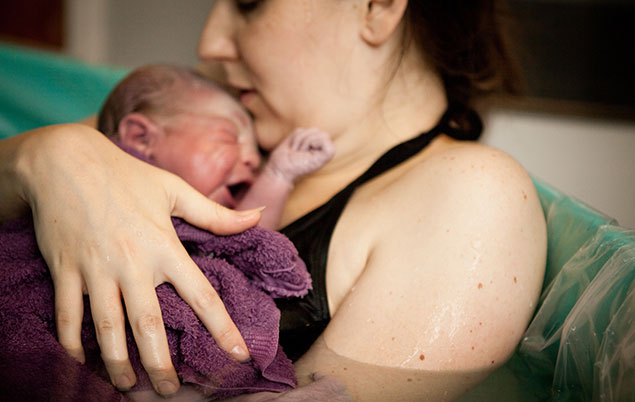What is water birth?
Water birth is when you have your baby in a deep pool of water.
Water birth is different than labouring in water. Many people spend some time in a bath or shower to help with their labour pains but don’t give birth there.
Is Water Birth Right for You?
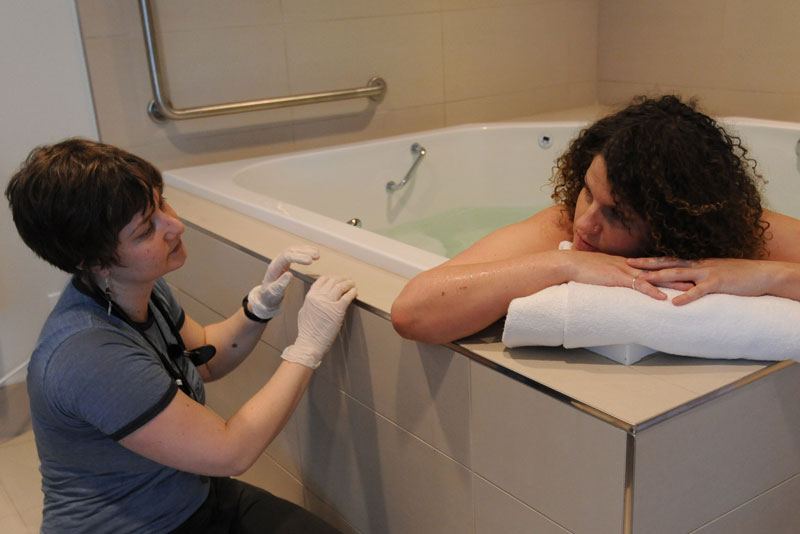
If you are experiencing a healthy, low risk, term (37 weeks or more) pregnancy you might want to consider a water birth.
Everyone’s experience of birth is different, but people typically find that giving birth in water:
- increases relaxation
- decreases pain
- increases the ability to move around and change positions
- provides an increased sense of control
- increases satisfaction with the birth experience
If you are considering a water birth you and your midwife will discuss some important factors to help you make a decision including:
- your health status
- your baby’s health status
- your personal wishes for birth
- if water birth is an option where you plan to have your baby
- the possible out-of-pocket cost to rent/buy a birth pool for a home water birth
Water birth is not recommended when:
- you go into labour preterm (three weeks or more before your due date)
- you are having more than one baby (e.g., twins or triplets)
- you are planning a home birth and don’t have access to safe, clean water
- you have an active infection such as herpes
- you want certain interventions (e.g., epidural) that require monitoring outside of the tub
Where Can I Have a Water Birth?
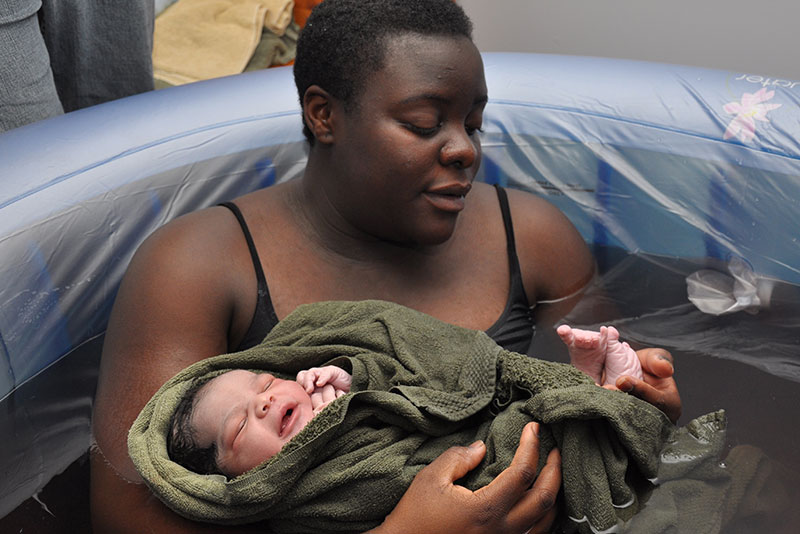
If you have a midwife in Ontario, you can have a water birth at home, in a birth centre or in some hospitals. Your midwife will help you decide which option is best for you.
Water Birth at Home:
If you decide to have a water birth at home, you will require a birth pool. Learn more here.
Water Birth in a Hospital:
Birth pool availability and attitudes toward water birth vary from hospital to hospital. If you are interested in having a hospital water birth, talk to your midwife about what is available in your community.
Water Birth in a Birth Centre:
Birth centres have large tubs that can be used for pain management and/or water births. Birth centre staff clean the tubs according to routine infection prevention and control protocols after every use; they make sure that the tub is clean and ready for you to use when you arrive.
Water Birth Safety
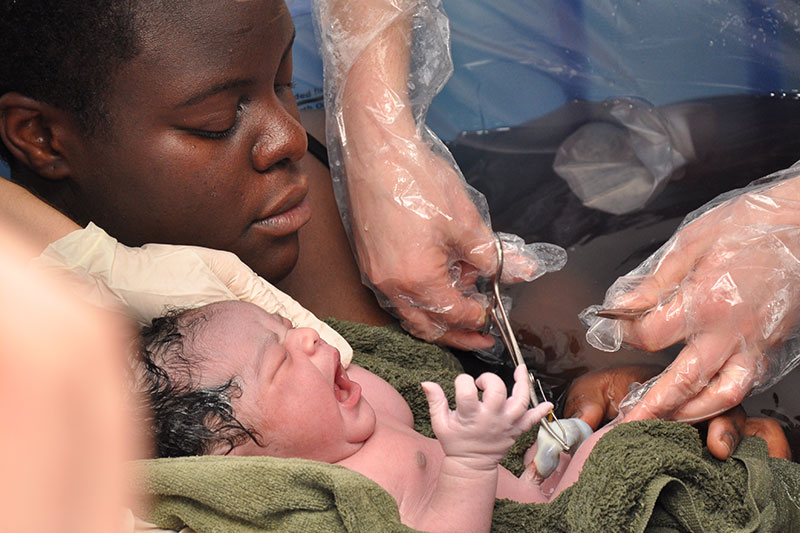
How will my midwife check on my baby’s and my health when I’m in the water?
Regardless of where your water birth takes place (home, hospital or birth centre), your midwife will closely monitor you and your baby to make sure there are no complications developing.
The monitoring you receive in the water is the same as you would receive out of the water. For example, midwives use a water-resistant tool called a Doppler to check the baby’s heart rate. Check out our birthplace options pages to find out more about what happens during labour and birth with a midwife.
Midwives have the skills to identify and correct many complications early. Your midwife may ask you to get out of the birth pool/tub if you and/or your baby need to be monitored more closely.
This could happen if:
- you have a fever
- your baby’s heart rate is too high or too low
- you need to change positions to help birth your baby or your placenta
- you have heavy bleeding
Your midwife will prepare a space close to the pool/tub suitable for labour and birth. If they have concerns about you and/or your baby, you can quickly get out of the water and move to this space so they can assess you more closely. This space is also there if decide you want to get out of the pool/tub at any time.
Find out more about the education and training midwives receive to help you have a safe birth.
What if my baby breathes in the water?
This is a common question about water birth! It is very rare that a baby breathes underwater. There are a few documented cases of this happening; nearly all of these babies recovered completely.
Newborn babies have what is called the diving reflex. The diving reflex blocks off your baby’s airways when they are underwater. This prevents them from breathing water into their lungs or drowning. In the short time your baby is underwater, they are still getting oxygen from the placentaThe placenta is an organ that you make just for pregnancy. It is attached to the inside of your uterus. The placenta’s job is to: transfer oxygen and nutrients from your blood to your baby filter potential toxins in your blood from getting to your baby filter waste away from your baby through their umbilical cordThe umbilical cord is made up of three blood vessels. These vessels act as the transportation system between your placenta and your baby. The blood vessels in the umbilical cord transport: oxygen and nutrients from your placenta to your baby waste from your baby to the placenta (just like when they were still inside you!). When your baby is lifted out of the water and feels the air on their face and the change in temperature, they know it is time to take their first breaths.
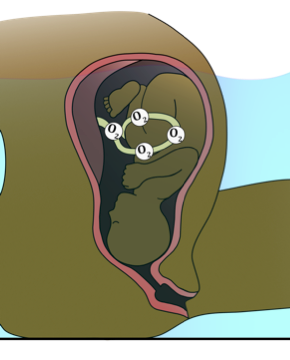
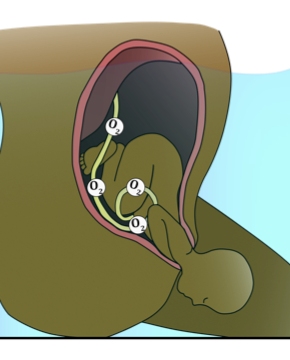
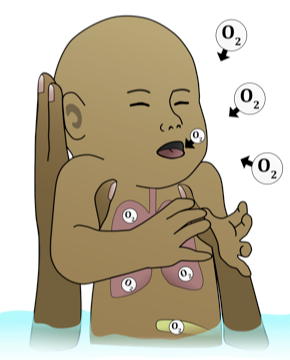
Pain Relief
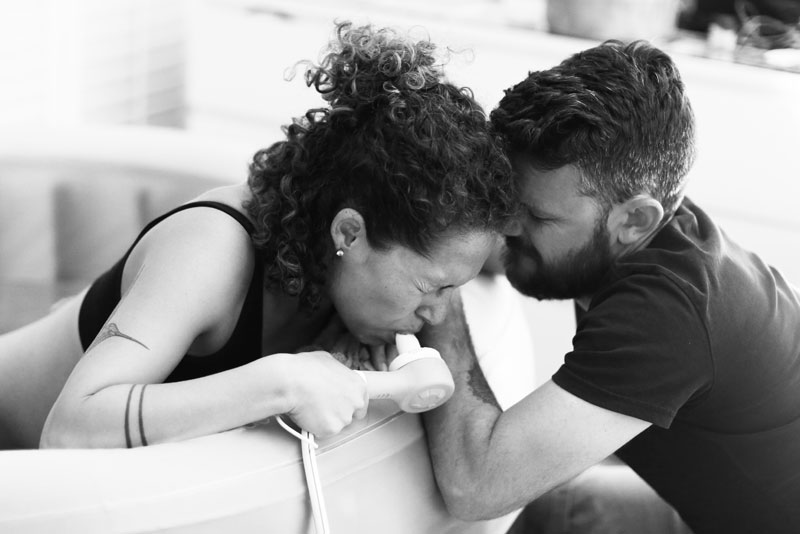
What are my pain relief options if I choose to have a water birth?
For many people in labour, being in a pool of deep, warm water provides adequate pain relief.
Other comfort measures include:
- relaxation and breathing techniques
- position changes
- massage
- sterile water injections for back pain
- nitrous oxide (where available)
Due to safety concerns, you cannot have medical forms of pain relief such as epidural or opioid analgesics when you are in the water. These medications can make it difficult or impossible for you to get out of the tub if you need or want to.
The Research
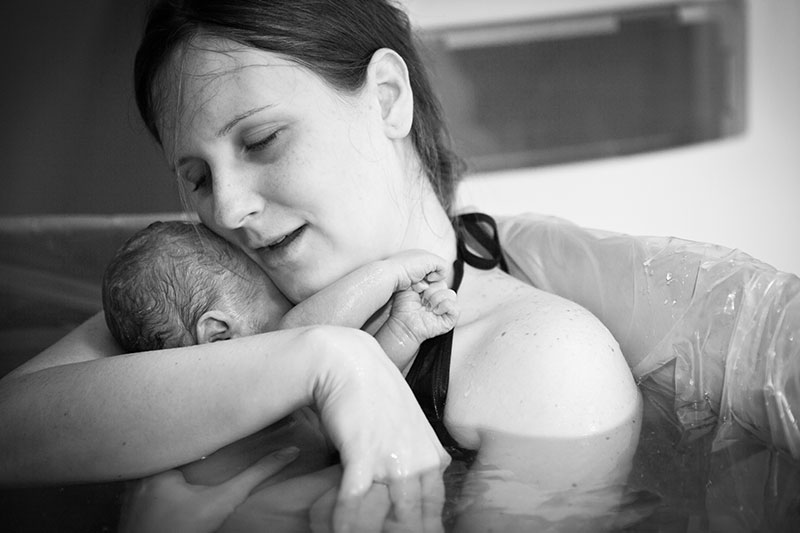
What does the research say about water birth safety?
Water birth is nothing new; it has been practiced around the world throughout history. There is a growing body of research that supports its’ safety. A 2022 systematic review including 36 studies and over 157,000 birthing people found clear benefits resulting from water immersion during labour and/or birth. All of the research to date tells us that there appears to be no increased risk to you or your baby if you have a water birth[i].
Birthing parent outcomes
In general, people who have water births tend to:
- have less tearing
- have less blood loss
- have similar rates of infection
- use less pain medication
- feel more relaxed
- have shorter labours
- have greater satisfaction with their birth experience.
Neonatal outcomes
When you plan a water birth with a midwife there appears to be no greater health risk to your baby than with non-waterbirth.
Research shows that neonatalA neonate is a baby that is 4 weeks old or younger. birth outcomes for babies born in water are similar to those of babies born out of water, including:
- Apgar scores <7 at 5 minutes
- need for resuscitation
- need to go to the Neonatal Intensive Care Unit (NICU)The Neonatal Intensive Care Unit (NICU) is a special place in the hospital where they specialize in looking after very sick newborn babies.
- infection
- neonatal death
There have been case reports that suggest water birth can cause infection and illness in babies. In fact, this is very rare. There are a few documented cases of newborns contracting an infection after a water birth, but these babies generally got sick because proper infection prevention methods were not used.
To avoid this rare possibility, you should:
- have and maintain a safe source of clean water throughout your labour and birth
- use a pool that is easy to clean and disinfect
- set up and disinfect your birth pool properly
- avoid water birth if you have an active infection such as Herpes
To learn more about the research on water birth, check out Evidence Based Birth.Evidence Based Birth is a place to go for current and unbiased interpretation of pregnancy and birth research to support your personal decision-making.
[i] Research adapted from:
Burns E, Feeley C, Hall PJ, Vanderlaan J. Systematic review and meta-analysis to examine intrapartum interventions, and maternal and neonatal outcomes following immersion in water during labour and waterbirth. BMJ open. 2022 Jul 1;12(7):e056517.
Cluett ER, Burns E, Cuthbert A. Immersion in water during labour and birth. Cochrane Database of Systematic Reviews 2018, Issue 5. Art. No.: CD000111. DOI: 10.1002/14651858.CD000111.pub4.
Bovbjerg ML, Cheyney M, Everson C. Maternal and newborn outcomes following waterbirth: The Midwives Alliance of North America statistics project, 2004-2009 cohort. J Midwifery Women’s Health . 61 (2016), 11-20.
Jacoby S, Becker G, Crawford S, Wilson RD. Water birth maternal and neonatal outcomes among midwifery clients in Alberta, Canada from 2014-2017: a retrospective study. JOGC [journal on internet] 2018 Dec 14 [cited 2019 May 01]. Available from https://www.jogc.com/article/S1701-2163(18)31036-3/fulltext.
Nutter E, Meyer S, Shaw0Battista J, Marowitz A. Waterbirth: an integrative analysis of peer-reviewed literature. J Midwifery Women’s Health. 59 (2014), 286-319.
Taylor H, Kleine I, Bewley S, Loucaides E, Sutcliffe A. Neonatal outcomes of waterbirth: a systematic review and meta-analysis. Arch Dis Child Fetal Neonatal Ed. 0 (2016), F1-F9.
Vanderlaan J, Hall PJ, Lewitt M. Neonatal outcomes with water birth: A systematic review and meta-analysis. Midwifery 30 (2018), 27-38.
Learn more about birthplace options:

